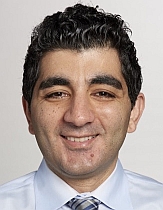
Kambiz Nael
There has been a need for accurate preoperative localization of parathyroid adenomas (PTAs) to decrease size of surgical incisions and complication rates. While ultrasound and technetium Tc99m sestamibi scintigraphy have been used as first-line tools to localize PTA, these tests can often be inconclusive.
Therefore, 4D-CT has been established as an alternative cross-sectional imaging modality in problematic cases. The advantages of 4D-CT include high spatial resolution to identify small PTAs and dynamic/perfusion characteristics to differentiate PTA from PTA mimics such as lymph nodes. However, there remains a high radiation dose—5.56 to 10 mSv—associated with multiphase CT, despite using advanced dose-modulating techniques.
MRI is an attractive alternative to 4D-CT due to lack of radiation but has not been used with the same effectiveness as 4D-CT, mainly due to traditional technical limitations of lower temporal and spatial resolutions.
So we decided to revisit an MRI approach, considering recent advances in MR technology in terms of fast imaging tools such as TWIST and CAIPIRINHA that can overcome traditional limitations of MRI.
By taking advantage of recent MRI technology we can obtain multi-phase contrast-enhanced data over a large field-of-view (12 cm) with high spatial (1.3 x 1.3 x 2 mm3) and temporal (6 sec) resolution. High spatial resolution helps to identify very small PTAs, and high temporal resolution provides perfusion characteristics that can differentiate hypervascular adenomas from thyroid nodules and cervical lymph nodes, as shown in our recent publication. If its potential is realized, the described 4D MRI protocol can provide an alternative diagnostic modality to 4D-CT without the need for radiation.